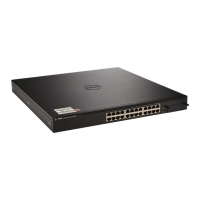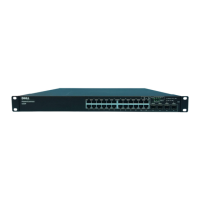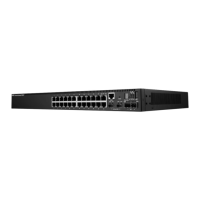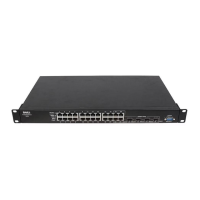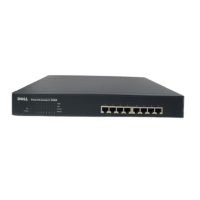Introduction 27
Spanning Tree Protocol Features
Spanning Tree Now Supports IEEE 802.1Q-2005
This version of the IEEE Multiple Spanning Tree Protocol corrects problems associated with the previous
version, provides for faster transition-to-forwarding, and incorporates new features for a port (restricted
role and restricted TCN).
Spanning Tree Enhancements
•
Loop Guard
— This feature prevents a port from erroneously transitioning from blocking state to
forwarding when the port stops receiving BPDUs. The port is marked as being in loop-inconsistent
state. In this state, the port does not forward packets. The possible values are Enable or Disable.
•
TCN Guard
— Enabling the TCN Guard feature restricts the port from propagating any topology
change information received through that port. This means that even if a port receives a BPDU with
the topology change flag set to true, the port will not flush its MAC address table and send out a BPDU
with a topology change flag set to true.
•
Auto Edge
— Enabling the Auto Edge feature allows the port to become an edge port if it does not see
BPDUs for some duration.
•
BPDU Filter
— When enabled, this feature filters the BPDU traffic on this port when STP is enabled
on this port.
•
BPDU Flood
— When enabled, the BPDU Flood feature floods the BPDU traffic arriving on this port
when STP is disabled on this port.
Spanning Tree Protocol (STP) per Switch
802.1d STP is a standard requirement of Layer 2 switches that allows bridges to automatically prevent
and resolve L2 forwarding loops.
For information about configuring Spanning Tree Protocol, see "Configuring the Spanning Tree
Protocol."
IEEE 802.1w Rapid Spanning Tree
Rapid Spanning Tree Protocol (RSTP) detects and uses network topologies to enable faster spanning tree
convergence after a topology change, without creating forwarding loops.
For information about configuring Rapid Spanning Tree Protocol, see "Rapid Spanning Tree."
Multiple Spanning Tree
Multiple Spanning Tree (MSTP) operation maps VLANs to spanning tree instances. Packets assigned to
various VLANs are transmitted along different paths within MSTP Regions (MST Regions). Regions are
one or more interconnected MSTP bridges with identical MSTP settings. The MSTP standard lets
administrators assign VLAN traffic to unique paths.
For information about configuring Multiple Spanning Tree, see "MSTP Settings."
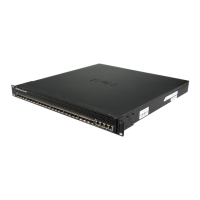
